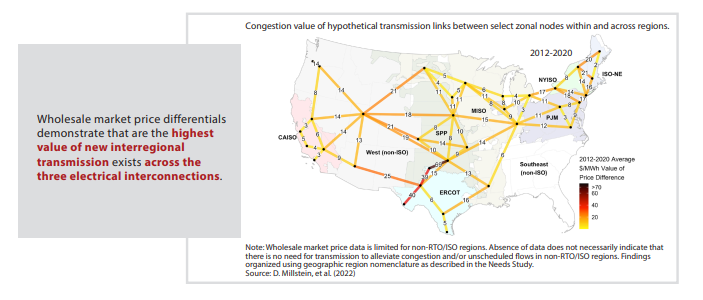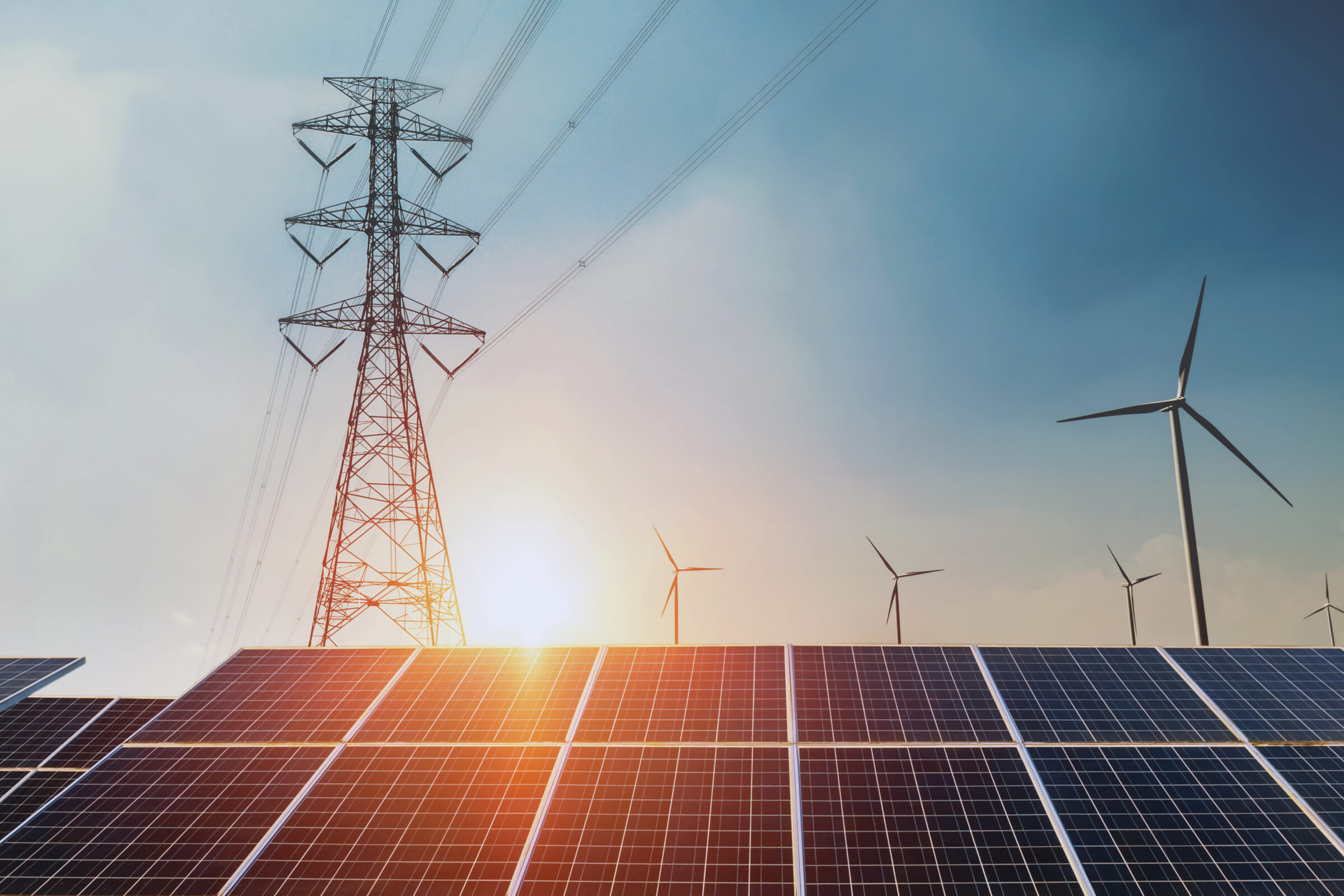- Grid Infrastructure
- Transmission & Power Markets
- Fact Sheets
Energy Assurance Depends on a Resilient Transmission Grid

Resilient electric power is essential to U.S. energy security. A more robust, high-voltage transmission network would help ensure domestic military bases and first-response emergency services in their surrounding communities always remain fully operational. The U.S. Department of Defense (DoD) conducts critical missions at more than 500 military installations across the nation, over 99% of which rely on the commercial electricity grid for power. U.S. national security operations require reliable power amid worsening climate, physical, and cyber threats.
Strategic investments in a high-voltage transmission system would add new capacity and flexibility, enabling the system to better withstand increasingly frequent extreme weather events and physical threats. More transmission capacity connecting U.S. grid regions is also necessary to ensure reliable, low-cost power.
For example, extreme winter and summer weather events have recently stressed the Texas grid, which has the lowest interregional transmission transfer capacity in the nation. Twelve of the 15 military bases in the Lone Star State lost power during Winter Storm Uri in February 2021. Every major DoD installation in Texas faced electricity, water, or communications service disruptions, and 694 DoD installation facilities were damaged in some capacity during the storm. Further, these reliability events can stress bases financially. Fort Cavazos was left with a $30 million electric bill after Uri, roughly the amount the base paid for energy in fiscal year 2020.
New interregional transmission lines could help mitigate against risks from extreme weather events. For example, the Grain Belt Express transmission project will connect energy resources across 23 states that contain more than a quarter of DoD’s footprint, offering greater regional resilience. Expanding long-range transmission capacity to create a more interconnected system that can better withstand worsening weather events is vital to national security.
Expanded regional and interregional transmission can ensure reliable electric power in the face of changing threats.
Power systems are subject to an increasing variety and magnitude of threats. While traditional reliability protocols plan for reliable operation during and after system contingencies, such as large generator or transmission line outages, changing threats call for more robust regional and interregional transmission.

High-voltage direct current (HVDC) transmission lines in particular offer unique capabilities that can connect isolated generators to critical customers across the country. Among these capabilities, HVDC lines offer operating flexibility, act as an extension cord during disruptive events, and can serve as jumper cables during an outage.
Interregional transmission lines provide regional grid operators significant resilience benefits.
Grid operators have repeatedly confirmed that transmission connecting large geographic areas saves billions of dollars annually by reducing the need for power plant capacity because of reduced variability in electricity supply and demand. Transmission planning processes often fail to account for the significant resilience benefits and cost savings these projects provide.

Transmission planners should calculate potential resilience benefits when developing long-term transmission plans. A large-scale transmission line will almost certainly offer critical electricity supplies during at least one severe weather event in its 50+ years of operation. Joint planning across interregional systems that increases system resilience is a proven transmission planning practice. To ensure long-term energy assurance, resilient transmission networks – including interregional transmission lines – are necessary.
Achieving energy resilience will require physical infrastructure capable of accessing geographically dispersed electric generation resources and delivering them across the country through a process which addresses the diverse needs of DoD missions and the resilience of defense communities that support installations. The status quo of transmission planning and design does not provide the resilience necessary to support national security needs.
Converge Strategies and Invenergy Transmission, “HVDC Transmission: A National Security and Energy Resilience Imperative” (2022).
Join leaders from across the clean energy sector.

What will our next 20 years look like? Here’s the truth: they’ll be better with ACORE at the forefront of energy policy.
Shannon Kellogg
Amazon Web Services (AWS)
